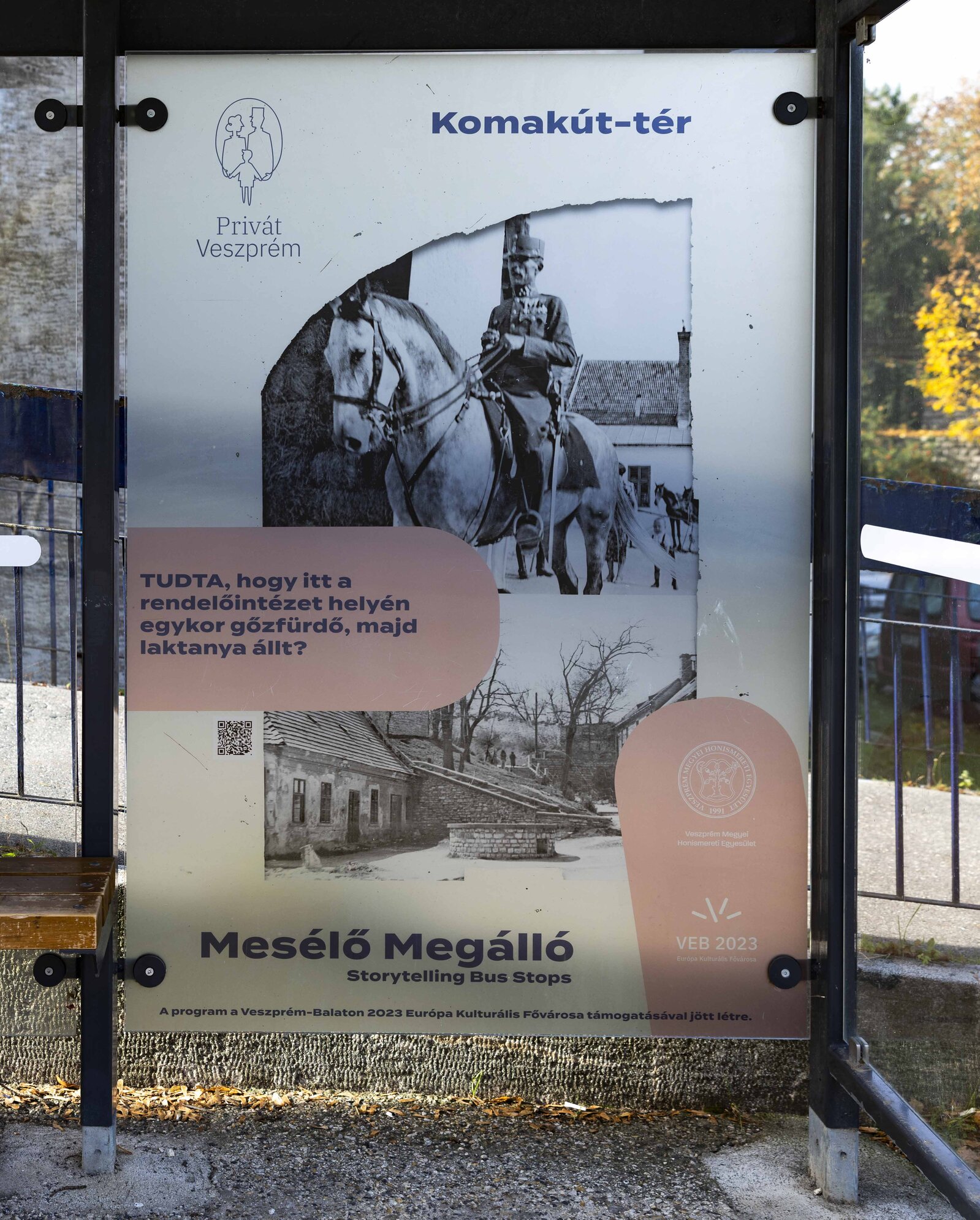Storytelling Bus Stops - Komakút Square Barracks


From 1859, the steam and tub baths of lawyer György Kopácsy operated on the site of the present-day outpatient surgery in Komakút Square. It was the second of the three town baths in Veszprém to serve the triple purpose of cleansing, entertainment and healing. The nearby rich spring water may have given Kopácsy the idea to build a steam and bathhouse in his building. In addition to 5 bathrooms, the owner also furnished the huge building with changing rooms, a lounge, a sweat room and a refrigerated room. The steam bath also included a 2300-litre and a 6000-litre water tank. The bath was used to treat rheumatic and nervous complaints and was attended by a doctor, Imre Szebenyi. At that time, guests could find all the necessities of bathing life in a guest inn on the outskirts of the town, in pleasant gardens. A good century later, in the 1960s, the idea of building a spa and swimming pool on this site was raised again in urban development plans, but the plans that were drawn up were never implemented.
Kopácsy House became a barracks in 1892. For a longer period the administration of the county seat dealt with the task of building the barracks, but due to the difficulty of decision-making, in 1891 it was suggested that one of the two companies stationed in Veszprém (the 71st Militia Infantry Battalion) be transferred to Székesfehérvár. Finally, in January 1892, the Minister of Defence approved the conversion of Kopácsy House into a barracks, and the work of turning the house into a barracks began under the leadership of Sándor Horváth, a master builder from Veszprém. An area was taken from the rectangular courtyard for a covered corridor, which was built on the ground floor and on the first floor. Upstairs, 26 streetfront rooms and 11 courtyard rooms, 8 storerooms and lavatories were constructed. The station and battalion commander's offices were also located here.
In Veszprém, after the German occupation (19 March 1944), the Jews of the county were concentrated in ghettos "for easier and regular control". This building, the former barracks in Komakút, was also designated by the deputy county steward as the place of residence for the Jews of the district of Enying and the surrounding settlements, in addition to the Large Synagogue colony in Horthy Miklós Street. In the last days of May 1944, the Jewish population of the area was transferred from twenty-four settlements. 190 Jews from Siófok, 73 from Enying, 40 from Szentgál, 20 from Nagyvázsony, 19 from Mezőszilas, 18 from Lepsény, and fewer from the other villages occupied the settlements assigned to them. 447 people - mostly women and children - crowded into the former barracks. Their isolation lasted until 19th June 1944. On that Monday, they marched in groups, under gendarme guard, with their modest baggage to the railway station. They were taken in crowded wagons to the camps, where they were certain to die. Since 2006, a commemorative plaque has been marking the tragic events. The building was not spared by air raids: on 21st February 1945, American planes bombed it. After the end of the war, a conscription of the damaged houses showed that four flats were occupied, the rest of the building was in ruins. In the summer of 1947 the then owner offered the house to the city for purchase, but in 1949 it was still privately owned. In the autumn of 1950, the Executive Committee of the City of Veszprém decided to 'demolish' what was then Zalka Máté Square. It is probable that this was the time when the remains of the building were removed. In the early 1970s, a park was developed on the site of the former baths, barracks and ghetto, and in the early 1970s the outpatient surgery was built there.

